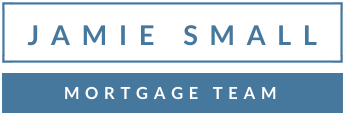Ottawa Mortgage Blog
Your Trusted Ottawa Mortgage Experts
Understanding Cash Damming: A Smart Tax Strategy for Homeowners
September 11, 2024 | Posted by: Jamie Small - Ottawa Mortgage Broker
As a homeowner, you're always looking for ways to make your money work harder for you. One effective tax strategy that could help is called cash damming. It sounds a bit complicated, but the idea is pretty simple—and it could save you a significant amount of money at tax time. Let’s break it down.
What is Cash Damming?
Cash damming is a technique that allows you to convert your non-deductible mortgage debt into deductible business or investment debt. In Canada, interest on a mortgage for your primary residence is not tax-deductible, which means you can't write it off on your taxes. However, the interest becomes tax-deductible if you borrow to invest or for business purposes. Cash damming takes advantage of this distinction.How Does it Work?
Here's a basic example for someone who owns a rental property:> Let’s say you collect $2,000 monthly in rental income and have a personal mortgage of $250,000. You also have $1,500 in monthly rental property expenses. Usually, you might use the $2,000 in rental income to pay for those $1,500 in expenses and pocket the rest.
> With cash damming, you’d use the $2,000 to pay down your personal mortgage instead. Then, you’d use a line of credit to pay the $1,500 rental property expenses. The interest on that borrowed $1,500 becomes tax-deductible because it’s linked to your rental property.
What Are the Benefits of Cash Damming?
Increased tax deductions: Converting non-deductible mortgage debt into deductible investment debt can significantly reduce your tax bill.Potential for faster mortgage paydown: Redirecting rental income to your personal mortgage allows you to pay it off more quickly.
More efficient use of rental income: You maximize the tax benefits from your rental property and your home expenses.
This same strategy can be applied for a business owner.
Here's a basic example. Let's say you have a personal mortgage and run a small business. Typically, you'd pay for your living expenses and mortgage with your income and use your business income to cover business expenses. With cash damming, you switch things up: You start using your business income to pay your mortgage. Then, you use a line of credit (LOC) or other borrowing tool to cover your business expenses. Since the money borrowed for your business can be used to make investments or cover business costs, the interest on that loan becomes tax-deductible. Over time, you’re shifting your non-deductible mortgage into a more tax-friendly, deductible debt.
Is Cash Damming Right for You?
Cash damming works best if you're self-employed, run a small business, or invest in income-generating assets. But it can be complex, and you must keep careful records. Before making any moves, it's wise to talk to a tax professional or mortgage advisor to ensure this strategy fits your situation.In short, cash damming is a savvy way to convert personal debt into tax-deductible business or investment debt, potentially saving you thousands on taxes each year. If you think this might work for you, reach out—we can explore how to make this strategy fit your financial plan.

